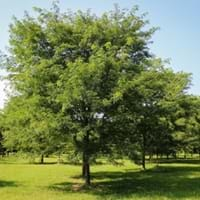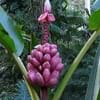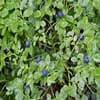Life Span
Annual
Perennial
Origin
China, Korea
Southwestern United States, Texas
Types
Sophora japonica
Not Available
Habitat
Humid climates, Loamy soils, Low annual rainfall regions, Wet ground, Woods
Arid Habitats, riparian zones
USDA Hardiness Zone
5-9
11-15
Sunset Zone
2a, 2b, 3a, 3b, 4, 5, 6, 7, 8, 9, 10, 11, 12, 13, 14, 15, 16, 17, 18, 19, 20, 21, 22, 23, 24
8, 9, 10, 11, 12, 13, 14, 15, 16, 18, 19, 20, 21, 22, 23, 24
Habit
Oval or Rounded
Upright/Erect
Flower Color
White, Light Green
Purple, Blue Violet
Flower Color Modifier
Bicolor
Bicolor
Leaf Color in Spring
Dark Green
Dark Green
Leaf Color in Summer
Dark Green
Dark Green
Leaf Color in Fall
Yellow, Dark Green
Dark Green
Leaf Color in Winter
Not Available
Dark Green
Leaf Shape
Elliptic
Pinnate
Plant Season
Spring, Summer, Fall, Winter
Spring
Sunlight
Full Sun
Full Sun
Type of Soil
Clay, Loam, Sand
Clay, Loam, Sand
The pH of Soil
Acidic, Neutral, Alkaline
Acidic, Neutral, Alkaline
Soil Drainage
Average
Well drained
Bloom Time
Summer
Early Spring, Spring, Late Winter
Tolerances
Pollution, Drought, Soil Compaction
Drought, Salt, Soil Compaction
Where to Plant?
Ground
Ground
How to Plant?
Seedlings, Transplanting
Seedlings
Plant Maintenance
Medium
Medium
Watering Requirements
occasional watering once established, Requires watering in the growing season
Drought Tolerant
In Summer
Less Watering
Lots of watering
In Spring
Less Watering
Moderate
In Winter
Drought Tolerant
Average Water
Soil pH
Acidic, Neutral, Alkaline
Acidic, Neutral, Alkaline
Soil Type
Clay, Loam, Sand
Clay, Loam, Sand
Soil Drainage Capacity
Average
Well drained
Sun Exposure
Full Sun
Full Sun
Pruning
Prune when young, Remove dead branches
Remove damaged leaves, Remove dead branches, Remove dead leaves
Fertilizers
All-Purpose Liquid Fertilizer
All-Purpose Liquid Fertilizer
Pests and Diseases
Leaf spot, Red blotch, Woodpecker feeding
Red blotch
Plant Tolerance
Drought, Dry soil, Soil Compaction
Drought
Flower Petal Number
Single
Single
Foliage Texture
Medium
Medium
Foliage Sheen
Matte
Glossy
Attracts
Bees, Hummingbirds, Woodpeckers
Butterflies
Allergy
Eczema, Nausea, Swelling in the face
Poisonous
Aesthetic Uses
Bouquets, Landscape Designing, Showy Purposes
Beautification
Beauty Benefits
Nourishes scalp, Restores Hair Colour, Stops hair loss
Not Available
Environmental Uses
Air purification, Erosion control, Forms dense stands, Shadow Tree
Air purification
Medicinal Uses
Diuretic, Fever, Muscle Pain, Vomiting
Not Available
Part of Plant Used
Bark, Leaves
Flowers, Seeds, Wood
Other Uses
Used as a laxative, Used as firewood, Used as Ornamental plant, Used in construction
Used as Ornamental plant
Used As Indoor Plant
No
No
Used As Outdoor Plant
Yes
Yes
Garden Design
Shade Trees, Street Trees, Topiary / Bonsai / Espalier
Feature Plant, Shade Trees
Botanical Name
SOPHORA japonica
SOPHORA secundiflora
Common Name
Chinese Scholartree, Japanese Pagoda
Texas Mountain Laurel
In Hindi
Gobur champ
Texas Mountain Laurel
In German
Japanischer Schnurbaum
Meskalbohne
In French
Styphnolobium japonicum
Calia secundiflora
In Spanish
Styphnolobium japonicum
Texas Mountain Laurel
In Greek
Styphnolobium japonicum
Texas Mountain Laurel
In Portuguese
Styphnolobium japonicum
Texas Mountain Laurel
In Polish
Perełkowiec japoński
Texas Mountain Laurel
In Latin
Styphnolobium japonicum
Texas Mountain Laurel
Phylum
Angiosperms
Magnoliophyta
Class
Magnoliopsida
Magnoliopsida
Genus
Styphnolobium
Sophora
Clade
Angiosperms, Eudicots, Rosids
Angiosperms, Eudicots, Rosids
Tribe
Sophoreae
Not Available
Subfamily
Faboideae
Faboideae
Number of Species
Not Available
Importance of Japanese Pagoda and Texas Mountain Laurel
Want to have the most appropriate plant for your garden? You might want to know the importance of Japanese Pagoda and Texas Mountain Laurel. Basically, these two plants vary in many aspects. Compare Japanese Pagoda and Texas Mountain Laurel as they differ in many characteristics such as their life, care, benefits, facts, etc. Every gardener must at least have the slightest clue about the plants he wants to plant in his garden. Compare their benefits, which differ in many ways like facts and uses. The medicinal use of Japanese Pagoda is Diuretic, Fever, Muscle Pain and Vomiting whereas of Texas Mountain Laurel is Not Available. Japanese Pagoda has beauty benefits as follows: Nourishes scalp, Restores Hair Colour and Stops hair loss while Texas Mountain Laurel has beauty benefits as follows: Nourishes scalp, Restores Hair Colour and Stops hair loss.
Compare Facts of Japanese Pagoda vs Texas Mountain Laurel
How to choose the best garden plant for your garden depending upon its facts? Here garden plant comparison will help you to solve this query. Compare the facts of Japanese Pagoda vs Texas Mountain Laurel and know which one to choose. As garden plants have benefits and other uses, allergy is also a major drawback of plants for some people. Allergic reactions of Japanese Pagoda are Eczema, Nausea and Swelling in the face whereas of Texas Mountain Laurel have Poisonous respectively. Having a fruit bearing plant in your garden can be a plus point of your garden. Japanese Pagoda has no showy fruits and Texas Mountain Laurel has showy fruits. Also Japanese Pagoda is not flowering and Texas Mountain Laurel is not flowering . You can compare Japanese Pagoda and Texas Mountain Laurel facts and facts of other plants too.





